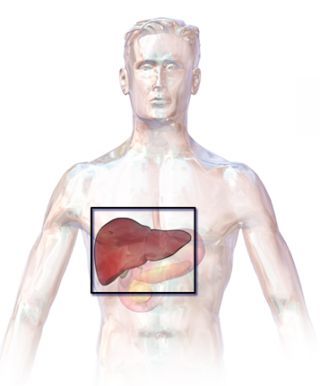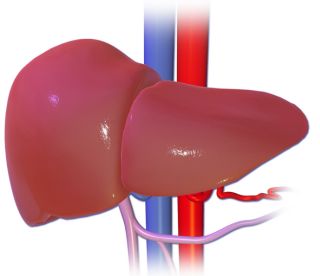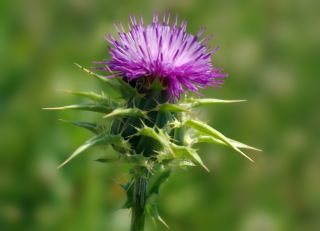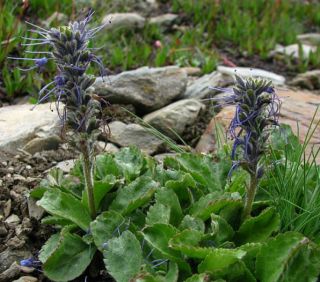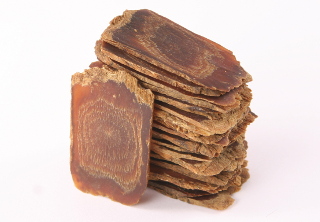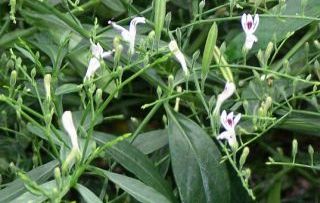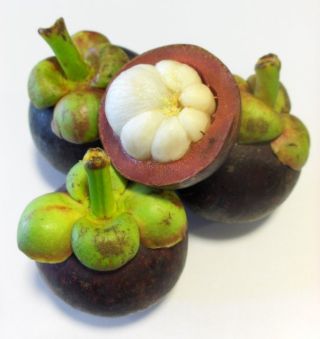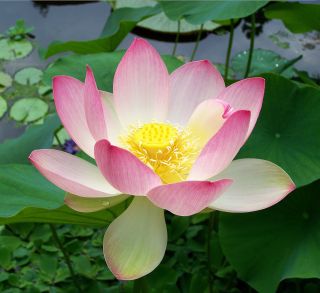Practical Summary: Do you have liver problems? Enjoy croissant and eat snobbish vegetables - artichoke, chicory, dandelion, burdock, snake mord, leaves of thistle and mainly young puppies. Take daily mosquito, ginseng, koptis. Roast with lots of curcuma (or curry) and pepper that allows curcumin absorption. With fleshy meals, eat grated fresh ginger (2g a day), which the capitalists put into it. Do not forget about Benedict, Pear, Smile, Sandwich and Basil. In addition, TČM recommends ginseng, stapler, gardenia and standard mixtures of shi-cha-hu-tang and shi-kuan-ta- buang (herb practice). For more inspiration, read the entire article.
Remarks: Jelly seed oil to protect the liver is mixed with virgin olive oil 1: 1 for better taste and healing. We use it for salads, mayonnaise and the like. no heat treatment, about 50ml per day. Thistle leaves after cutting prickly edges surpass the salad.
About liver diseases
Liverare the key organ of metabolism, poison detoxification, and homeostasis - maintaining the right level of sugar, fat, and everything in the blood. Liver is the central stock of nutrients - glycogen, essential fat, vitamins ... (Further nutrient supply is in muscles and fat tissues). Liver is also exceptional because it is included in the so-called portal circulation. This term means that the blood that has already passed through the capillary network in the wall of the digestive tract where the nutrients are absorbed does not immediately return back to the heart but returns to the other capillary network in the liver, blood filter. The vein vein has a higher pressure (it is something between the artery and the vein), and the blood is usually milky-colored with absorbed fat droplets after a hearty meal.The liver harvests these nutrients from the blood and at the same time cleanses it from damaged blood cells and other waste that would otherwise kill mainly the heart and the lungs. For this reason, the liver is usually the first to stop those pathogens that penetrate the body through the oral route. Liver lobes, not unlike the oil filter in the car, are subject to considerable wear and need to be replaced frequently. For this reason, the liver has a high regenerative capacity: The worn lobes are atrophic and their place is occupied by newly grown lobes.The worn-out lobes are atrophied and their place occupies the newly grown lobes.The worn-out lobes are atrophied and their place occupies the newly grown lobes.
In terms of adapogenic theory, poisons and pathogens penetrate the body through the oral route under chemical and biological burden . Hepatoprotective adaptogens for the body to counteract this burden improve. The hepatoprotective effect is often associated with the anti-inflammatory and antioxidant effects of adaptogens. A common feature of most liver diseases is hepatic inflammation - hepatitis that may or may not be accompanied by jaundice.
The liver's regenerative capacity excels over other internal organs. One is able to survive the surgical removal of up to 70% of the liver, which again grows to its original size (see Prometheus), which does not apply to any other internal organ. But even the liver can not stand it. Forcing too much to regenerate by rubbing or stinging is to say about their cancer - hepatoma . For the same reason, they increase the risk of both cancer and hepatitis viruses (hepatitis). Regeneration ability of the liver is not infinite. Like any healing, liver regeneration leads to the formation of scar tissue (fibrotic). When after multiple regeneration the fibrotic tissue in the liver accumulates, further regeneration is impossible. This condition is called hardening of the liver - hepatic cirrhosis. Today, however, citizens of hardened countries also suffer from fatty liver (steatosis). The fatty liver is not hardened, but its consistency is reminiscent of the popular foie gras . Steatosis is a common cause of obesity.
Hepatoprotective herbs of our tradition
Before the era of industrial drugs, we treated the liver mainly with herbs. Most of our traditional recipes, however, fell into oblivion. Partly because, unlike the TCM, our healers sometimes did not know what the liver was. (There is an explanation for humorless people: I joke.) In our pharmacy, however, we have a beautiful category of so-called cholagogs and the equally nocturnal category of so-called stomachic (stomach plants). These categories by name are somehow vaguely related to hepatoprotection, but how? For the entire term hepatoprotective is somehow built on the water ... It may be seen a marked tendency of our herbalists considered good enough for the liver every bitter plant, which corresponds to more colossal category called Amara (literally. "Bitter herbs") - Gentian, chicory , ground , dandelion , vahta ...
It is strange that our most famous hepatoprotective herb - the Marshmallow - is not bitter. Its active substance is silymarin. Silymarin is not a single substance, but a non-polar (fat-soluble) mixed seed extract of this plant. Its effects are documented by stacks of publications whose references can be found, for example, in the Bahmani2015smb report . In addition, the large leaves of the thistle can be eaten as a salad, after wearing the prickly edges of the blade, which can be flavored with dressing or mayonnaise from a mixture of the same piece of olive and virgin olive oil.
As I said, the herbs with some vague relation to the treatment of liver ailments in European herbalism many: basil , cnicus , maritime pine , camellia sinensis , chicory , Nigella sativa , black currant (fruit, leaf and liver as well as root) , garlic , Scorzonera , gentian yellow , juniper , burdock larger , couch grass , Speedwell , yarrow , agrimony ,christian schisandra , medical cream , sandy sage , sage medical , agricultural medical ... The list of our herb "liver" further includes dubious items such as the hepatic dandelion and the vagle triplanes that have the shape of the leaves to resemble the liver. Opinions about the relative strength of these plants are different among our herbalists, and the concord can be summed up with the words "eat croissant and lots of vegetables". Ostropestřec is a thistle and when we are already with that vegetable, the thistle empire can be recommended for the liver also artichokes , puppy Bieberstein and puppy noodle(the root and the young ensemble that tastes the artichoke). The Thistles include the already mentioned cnicus that with puree and immortelle lies the most effective hepatoprotective our tradition. Others do not let go of the ribbon and selected deaf-ears: the apple , the lizard , the mint , the lute and the aforementioned sage . Babo.
Hepatoprotective herbs of India and tropics
So, when European scientists do not know what's best about the liver, we reach out to the wisdom of the busy foreign systems that Indian Ayurveda belongs to. Where have we done this in the previous paragraph? Oh, in the deaf. So, in Ayurveda for this family we have a basil sacred ( tulsi ) , which is not only for the liver, but it also reminds Italian basil true , also miraculous. They both help. However, the most important hepatic herb of Ayurveda (besides the mollusc known from TČM ) is the bitter-kite kernel (mistakenly "Himalayan hawk "). However, he did not even meet the herbalist Stanislav Sehnnálek (see  ), as they practically exterminated her free collectors.
), as they practically exterminated her free collectors.
And we're back where we were. Even in India, the plant has "liver" so many that they do not know which one to choose. The previously mentioned survey Kumar2012rhh adds: fennel , common fig , chamomile , seaweed Sargassum blistering , cassia general , cassia Roxburghova , swertia Himalayan , kumbovník general , kurkumovník long , Annona scaly , black nightshade , mangosteen , měkýn Latn , neshodice white , gingerbread sweet, Fenugreek , polardie michoakánska , rojok Dyer , cress , slivouch Madagascar , sad medical , šarlatka magnificent , trubkovec rod , vedélie crescent-moon , the Neem tree Indian , fumitory Indian and even poisonous Jatropha curcas . Overview Ilyas2016rhi adds: cotton herbal , boldo fragrant , pine littoral , cist laurel , corydalis rock, Gardenia jazmínovitá , hibiscus Sudanese , gingko , butterfly bush medical , Lara drills , mangrove Indian , pickled heart-shaped , paheřmánek sticky , Chinese Schizandra , sad bitter , magnolia medical and prickly cordata . It is clear that it is not just possible to choose tropical beasts from some possible lists. That is why at the lectures of medical botany we cultivate the feeling for herbs, genera and families. The man with a feeling immediately falls into the eye of a trumpet stick that reminds him another tropical miracle of the same family, pačuli, whose anti-inflammatory effects also indicate to the liver. Both miraculous dudes study and go. Conversely, even the groomist can easily understand that the poisonous black dwarf from the rustyit will probably not be an adaptogen or a tea, except a cheap pharmaceutical raw material (normally made of biodiesel). After the initial alertness about the relatives related sadly, however, the same herbalist cheers and smell bitter, sour and medical patients will cheerfully recommend. Slowly sour and medical is the excellent healing fruit, while from sadly bitter it is used rather a leaf and a leaf in the form of an infusion, 2-4g per day calmly with viral hepatitis. But smirk is just one of many superbylins and I'm not a doctors. Everyone has to crawl her lists of herbs by themselves. That is why I always put emphasis on practical accessibility, which is not sad at all - by 2018, it was possible to get only the dried smut niruri , nicknamed chanca piedra .
Hepatoprotective herbs TČM
Finally, you've got sections with clear, non-speculative instructions. I congratulate patient readers. The biggest order in hepatoprotective herbs is TCH. I do not mean that Ayurveda lags, but you know, India. TČM is attractive for hepatic problems by maintaining a unified therapeutic line. In other words, there is a consensus among Chinese herbalists about what they "prescribe" to the liver. According to Lam2016hec, the Chinese are not allowed to:
- měkýn Latn , leaves ( Andrographis herba )
- ginseng root, root ( ginseng radix )
- Chinese licorice , root ( glycyrrhizae uralensis rhizoma )
- Chinese chinensis , fetus ( chinense fructus )
- Coptis chinese , fetus ( coptidis rhizoma )
- kurkumovník long , rhizome ( Curcumae longae rhizoma )
If you are a herbalist or better, herbalist knowledgeable physician, you can plant these plants without ceremony and great worry about interactions, massaging both eyes over banned and command labels. You know, capitalism. Plus something: turmeric is to be used with pepper (both as a part of the diet), although piperine facilitates the absorption of curcumin curcumin ( Berginc2012pbo ). Just make sure that the patient does not take the liquor permanently (it is not an adaptogen) and has not consumed more than half a pound of coping for sitting. (For non-humorous readers: it is a jokeous bitterness about the bitterness of Koptisu.) Kurkumu, ginseng and garlic can be used quietly in meadows, which will be supplemented with a datacle (other tiny fruits that the TČM does not allow). When you add a generous daily dose of ice cream and dietary supplements to the already mentioned hepatoprotective vegetables ( artichoke , chicory , dandelion , burdock , snake mord , millet leaves and young pups of pups ), you are sure that you have reached your phytotherapy. And in Asia I will once again mention a teaspoon whose polyphenols, theobromine and theophylline ( Hussein2015tod ) also help the liver. If you want to TCM inspire more try (according Liu1994ech ) Rhodiola whose salidrosid protects inflamed liver ( Yang2016sao ) and weighan elusive landscape and a yellowish jerlin . (I do not know how to dosing or other details, I'm not a supernatural creature.) And the most standard inspiration is the two standard mixtures of herbs that (according to Lam2016hec again ) the TCT usually prescribes for the liver:
- shiao-hai-hu-tang (小 柴胡 汤, smaller proton potion)
- shi-kuan-ta-bu-tang (十全 大補 湯, general strengthening potion)
For more information, click here. These mixes are routinely available for purchase, but they can also be handled by a clever pharmacist.
Hepatoprotective effects of salmon and ginseng
Lathe moss and ginseng are well-researched hepatoprotective plants, which are worth paying attention. The latin-like mackerel , or the latrata, andrographis herba , is widely used in hepatic and respiratory problems both in TCM ( Lam2016hec ) and in India ( Akbar2011apr ). With its high content of effective glycosides, flavonoids (> 20) and diterpenoid lactones (> 20), the mucin is at least as effective as the whipper ( Kapil1993aem ).
Regarding ginseng, the TČM recommends all three of its types: ginseng , notoginseng and Japanese ginseng ( Lam2016hec ) as documented by Ng2006pas , Yoshikawa2003snd , Liu1994ech and others. No less effective is American ginseng ( Xu2017sgl ) and Vietnamese ginseng , whose major panaxosid majonoside R2 is demonstrably hepatoprotective ( Tran2002hem ). To protect the liver from oxidative damage during exercise demonstrates Voces1999eas for patent ginseng extract G115. The ability of ginseng to protect the liver from toxins documents Martinez1984pea and Bak2012ahe at CCI 4 , Zhu2015gac with cyclophosphamide, Kim2011pek with aflatoxin, Igami2015hef with paracetamol and Fu2013peg in experimental obstructive jaundice. Specific panaxosides are Rb 1 , Compound K ( Lee2005heg ), Rg 3 and Rh 2 ( Lee2005he2 ). Heat treatment for red ginseng does not reduce the hepatoprotective effect ( Yokozawa2007tph). Efficacy of ginseng against cirrhosis ( Lo2011gri ) is also explained by the action of ginsenoside Rb 1 on fibrotic liver remodeling ( Tark2015egr ).
Hepatoprotective fungi
At this point, I must honestly admit that if European herbalists are confused with hepatoprotective plants, they do not know about hepatoprotective fungi. Unless you recommend the oak tree, which, according to the medieval doctrine, reminds you of the liver. I do not much better either. The Mushroom Empire must necessarily contain an equally rich treasury of medicinal substances as a plant kingdom, but I do not know it. Therefore, as one example, I give only the proven mushroom adaptogen - glossy gloss . Its protective effect was confirmed by the poisoning of CCl 4 ( Sudheesh2012glp ), benzpyrene ( Lakshmi2006aam ), ethanol ( Jang2014heg ), heavy metals ( Jin2013peg) and liver damage by radiation and cytostatics ( Wang2006aae ). The effect of cirrhosis is documented in the Kwon2011aaf study . A wider overview of other hepatoprotective fungi, as I have already said, is missing. I do not need to mention coconut because I do not want to mention mentioning the above-mentioned general boosting potion ( TČM ) and camphor outflow for ecological reasons (threatening the nutrient plant by extermination).
How to eat hepatoprotective crops
To the naive observer it would seem that eating is a non-requisite activity. When it comes to " eat garlic," everyone knows that cooked garlic can be cooked, baked, fried, or rather raw, either in the form of a paste like a lingon, or as a sour cream softened with sweet cream. That he can not eat it. And that when one does not want to smell the toast, it uses this first-rate adaptogen in the form of a "garlic" capsule. However, we do not have this knowledge for snobbies. We almost can not even eat ginger. Older years, they associate it with gingerbread and do not know that this first-rate adaptogen is a necessity for meat, like a smoked tofu, a fish soup and mussels, a cooked cereal, or a delicious pork liver cut into thin slices with a thick soy sauce. (Summer, come back!) Delicate ginger is rubbed on the threads that taste better in the meal. No one needs to ask how it is with garlic and sea. Everyone knows that garlic in the kitchen is unimportant, while garlic and bear garlic are very important. And that Allium cepa is not (as a generic name would suggest) a kind of garlic, but a culinary completely different unusual onion kitchen, which, in the case of hepatic problems, will serve as a finely chopped mixture of sour cream, if permitted by the attending physician. But we do not have this information with Snob and Tropical Herbs, so it is important to mention them.
Snob hepatoprotective vegetables
Hepatoprotective vegetables ( artichoke , chicory , dandelion , burdock , snake mord , ostropestrec, pupa , all kinds of absolutely miraculous) are prepared to preserve maximum freshness. As? Here we go into culinary art. Read woman.cz , cooking.cz , search Smudlo . Let's remember 3 statements:
- Place the vegetables in boiling water
- Steam cooking is the most efficient
- even more gentle is not to cook at all
Further snobbish words blanching and pressure cooker. Salt during blanching and pressure cooker serve the same purpose: increase boiling point. In the case of vegetables, a coagulated surface layer that slows the bleeding is created more quickly. That's why we cook for a short time. Artichokes must be able to peel . Pupava must be able to grow , it is also excellent. The cream for direct consumption must also be grown, outdoor is all dirty and unsuitable for patients. Smell hearts are even a little healthier than grown chicory from supermarkets. On the other hand, the desirable fresh root of chicory, cream and burdock is not available in our country. Can be digested or digested in a dried state in a herbarium. Rather than using tea as dried vegetable soup in addition to the usual ( parsley, celery , I do not mention them for fun, they are heavily hepatoprotective). Of course, young hearts also taste burdock, bitterness does not matter to experienced herbivores. Snake mord can be grown and bought again, the roasted root is only slightly boiled in acidified and salted water, calmly in the skin. That the fresh leaves of the olives are vegetables I have already said. And if you snobbery can not imagine without asparagus and sick except blanšírovaného asparagus treat and broccoli , Brussels sprouts , romanesco , rucola , lamb's lettuce , alfalfa (lucerne sprouts) and when we had those sprouts, very snobbish, so you know that sprouts from broccoli and red cabbageare they much, much, much healthier than white cabbage ? Extremely healthy despite the sharp taste and cherry sprouts. The cabbage and cress must not be avoided for the sharp taste, in the kingdom of the germ is one of the most beneficial. A tasty mixed drink can be prepared with the addition of a pinch of hepatoprotective fruit or other softening ingredients (eg pistachios, in the worst and smoother). Tasty and healthy are also lentils , chickpeas , soybean and mungo beans , but my personal favorite is sunflower germ . Good taste and break the liver.
Snob hepatoprotective oil
Oil is not as expensive, so you do not have to buy the cheapest on the market. Mix high-quality virgin olive oil with the same or a little more virgin olive oil as olive oil, polyphenols and other olive oil also protect the liver ( Liu1994ech , Valenzuela2017cmh , Hernandez2017sda ). Use the mixture mainly in cold kitchens in dressings, mayonnaise and the like so that the average daily dose of the mixture is about 50ml. And if you can not imagine snobbies without a caviar, a food with a record content of ω-3 unsaturated docosahexaenoic acid (DHA), add to this mixture of oils another part of snob sesame oil that is up to 85% polyunsaturated (seePUFA ). However, you can easily get your fish fat from more fatty seafood, or a bite of cod liver in your own oil with fresh onion, at the worst of fish fat.
Snob hepatoprotective fruit
The abovementioned lists of hepatoprotectants contain plenty of fruit. The effect of these items is specific and nonspecific, very appropriate if you want the patient to indulge in special love. I comment in a row. Figs we know about everyone, the leaves are effective, so we eat fresh fruits. A mature bottle (čajima) is not getting, buying it in powder is useless. The mangosteen is an effective fertilizer, so we will eat a delicious fetus and a bitter garlic throws hens. (For Annona and mangosteens are flying to Hong Kong.) The good news is hepatoprotective mulberry black and ripe fruits of black nightshade . I did not taste a great asshole , but a swarmI rummaged in my hand, and I'll tell you the elbow. You do not want to eat that for the raw, raw, inedible fruit from the Polynesian islands. This hungry, emergency, even mature state like a hard, dull, hot-tasting fruit full of sharpened seeds can be processed with some peripetitions (sensitive readers to spare disgusting details) to an extremely tasty juice that is also on sale to us . I was already sad about the sad, sour and sadly fruitful fruits, but as well as the sweet (tastefully remarkable plums) we do not have again. Spectacular charlatan (charlatan cucumber ) is effective, so we do not have it again. In our country, you will find (with the Vietnamese in SAPE) only fresh bitter cucumber, Chinese Momordiku, whose miraculous effect (on the liver and in general) documents the Jia2017ram review . Dried balsam apple is commercially available extract of šarlatky only from abroad under the name Ivy gourd (beware, English ivy also tells ivy ). Special is the Sudanese hibiscus , whose sour, fleshy flowers are eaten as fruit and dried to avail . Ginkgo leaves are mainly treated with medicinal herbs, but the female carries lightly edible fruits, the scent reminiscent of mature noni, but with delicious nuts inside (can be ordered from abroad ). They are only 5-6 pieces a day, cooked or slightly roasted, basically not raw. Finally, we all know mango. Just mention that the smaller wild mango is more effective by weed control.
Elderly consumption
Glossy glossy is a snob hepatoprotective fungus par excellence, not only a price, but also a privileged position in Chinese medicine. This sponge makes our books as inedible because it's too stiff. Little is known, however, that it is not necessary to consume it only in the form of capsules, but that it can be supplemented in the form of mushroom powder with meat broths in which the fat present relieves the bitter taste of its medicinal triterpenoids. Glossy is as harmless as ginseng, but its triterpenoids are not cheaper than ginseng. So if you can afford a snob gloss powder, try treating your patient as a hen or beef soup. Consumption in this form is a completely different experience than the use of glossy capsules.
Skeptical conclusion
It is the popularity article on hepatoprotectants that I think is the right place to say that the category of hepatoprotective is actually very outdated. In the middle ages, into the cholagog era, choleretic and amar. Potion for the liver, this is a very poor pharmacological specification. What is the liver? Actually, almost nothing. A mere macroscopic organ, when these really important processes take place in the world of molecules. Surely, the liver is important for surgeons when you need liver disease, liver cirrhosis, liver rupture, liver resection ... Also for ecologists, if you need a liver motorcycle or a liver buble. But the molecular biologist, who alone can see the healing of herbs, can not see the liver, but membrane proteins, transporters, ion channels, signal cascades, and gene networks. Organelles and biochemical pathways, which are everywhere, not only in hepatocytes. He sees,how the liver beams hold, clutter, and die. They see how macrophages remove the worn tissue. How stem cells multiply and teach young hepatocytes. How fibroblasts build new beams. How they grow into capillaries, blood vessels and bile ducts. And here comes a herbalist and he starts to spill something about his stomach without knowing what a peroxisome and a cytochrome. Or have you ever heard of a charlatan talking about peroxisomachics and glucurytics ("glucuronidation drops")? Simply herbal terminology hangs hopelessly in times of cruel feudalism, and hence the article on hepatoprotective from a biomedical point of view can only be bad. I do not even dare to continue to enumerate other natural hepatoprotective agents, which would also includeHow stem cells multiply and teach young hepatocytes. How fibroblasts build new beams. How they grow into capillaries, blood vessels and bile ducts. And here comes a herbalist and he starts to spill something about his stomach without knowing what a peroxisome and a cytochrome. Or have you ever heard of a charlatan talking about peroxisomachics and glucurytics ("glucuronidation drops")? Simply herbal terminology hangs hopelessly in times of cruel feudalism, and hence the article on hepatoprotective from a biomedical point of view can only be bad. I do not even dare to continue to enumerate other natural hepatoprotective agents, which would also includeHow stem cells multiply and teach young hepatocytes. How fibroblasts build new beams. How they grow into capillaries, blood vessels and bile ducts. And here comes a herbalist and he starts to spill something about his stomach without knowing what a peroxisome and a cytochrome. Or have you ever heard of a charlatan talking about peroxisomachics and glucurytics ("glucuronidation drops")? Simply herbal terminology hangs hopelessly in times of cruel feudalism, and hence the article on hepatoprotective from a biomedical point of view can only be bad. I do not even dare to continue to enumerate other natural hepatoprotective agents, which would also includewithout knowing what is peroxisome and cytochrome. Or have you ever heard of a charlatan talking about peroxisomachics and glucurytics ("glucuronidation drops")? Simply herbal terminology hangs hopelessly in times of cruel feudalism, and hence the article on hepatoprotective from a biomedical point of view can only be bad. I do not even dare to continue to enumerate other natural hepatoprotective agents, which would also includewithout knowing what is peroxisome and cytochrome. Or have you ever heard of a charlatan talking about peroxisomachics and glucurytics ("glucuronidation drops")? Simply herbal terminology hangs hopelessly in times of cruel feudalism, and hence the article on hepatoprotective from a biomedical point of view can only be bad. I do not even dare to continue to enumerate other natural hepatoprotective agents, which would also includepunarnava rozkladitá , velvetleaf Indian , acanthus cesmínolistý , pennywort Asian , kumquats Japanese , Luštěnice rosnatkolistá ( AbdelKader2009hcc ) stromovice arame , mangosteen, bitter , Rohatec oval , Sargassum spindle , hovenia sweet , lotus India , karapinča Koenig , water lily star , peony Chinese (part already of the general reinforcement potion ), Indian courier, Můrovec noble , Leadwort Ceylon , puerarie lobed , ivy Koželužská , vilnokvět reticulated , ještěrořep Chinese , sage červenokořenná , panacea skullcap Baikal , tephrosia purple , chebula cordata , řemdihák bitter , superovoce blueberries , panacea vines (without alcohol) and seafood.
